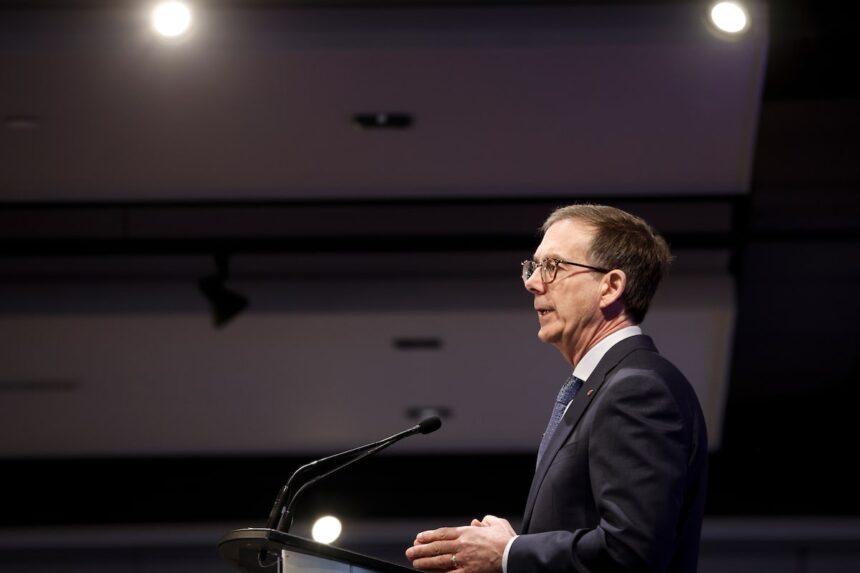In a stark warning that has sent ripples through financial markets, Bank of Canada Governor Tiff Macklem cautioned Thursday that persistent tariffs between Canada and the United States could trigger a dangerous inflationary spiral, potentially undoing months of careful economic progress. Speaking at the Toronto Economic Forum, Macklem emphasized that trade disruptions pose a significant threat to Canada’s economic recovery at a time when inflation has only recently shown signs of stabilization.
“The interconnected nature of our supply chains means that tariff barriers don’t just affect the targeted sectors—they cascade through the entire economy,” Macklem stated during his keynote address. “Our models suggest that sustained trade friction could add between 0.3 and 0.7 percentage points to inflation over the next year alone.”
The comments come amid escalating concerns about the future of the Canada-United States-Mexico Agreement (CUSMA), as American election rhetoric increasingly focuses on protectionist trade policies. With approximately 75% of Canadian exports destined for U.S. markets, even modest tariff increases could have outsized impacts on Canadian producers and consumers alike.
Analysis from the Bank of Canada indicates that sectors particularly vulnerable to trade disruptions include automotive manufacturing, agriculture, and energy—industries that collectively employ over 1.8 million Canadians. The central bank’s research suggests that companies would likely pass between 60-80% of tariff costs directly to consumers, exacerbating inflation precisely when Canadians are seeking relief from high prices.
“We’re finally seeing inflation trending toward our 2% target,” Macklem noted. “Trade disruptions at this juncture would force us to reconsider our monetary policy approach at a time when Canadians are hoping for interest rate stability.”
Canadian business leaders have expressed mounting concern about the uncertainty. Jean Simard, CEO of the Aluminum Association of Canada, told CO24 that planning has become increasingly difficult: “We’re essentially operating in two parallel universes—one where trade flows normally and another where we face significant barriers to our largest market.”
Economic experts suggest the timing couldn’t be worse. With household debt at record levels and interest-sensitive sectors already struggling, any policy that drives inflation higher could necessitate additional interest rate hikes, further straining Canadian consumers.
“The intertwining of our economies means both countries ultimately lose in a tariff war,” explained Avery Williams, chief economist at Toronto Dominion Securities. “History shows us that protectionism typically results in higher prices, reduced competition, and ultimately slower growth for all parties involved.”
Government officials from both countries have reportedly intensified discussions in recent weeks, with Canadian Deputy Prime Minister Chrystia Freeland meeting her American counterparts to emphasize the mutual benefits of the current trade relationship. Sources close to the negotiations indicate that contingency plans are being developed to address various scenarios, though details remain confidential.
For everyday Canadians, the stakes couldn’t be higher. Economic modeling suggests that a sustained 10% tariff on key Canadian exports could increase the average household’s annual expenses by approximately $1,200—an unwelcome burden as families already grapple with elevated living costs.
As political rhetoric intensifies and economic uncertainties mount, the critical question remains: can Canada navigate these treacherous trade waters without sacrificing the hard-won progress in the fight against inflation, or are we headed toward a perfect storm of economic challenges that will test the resilience of our integrated North American economy?


















